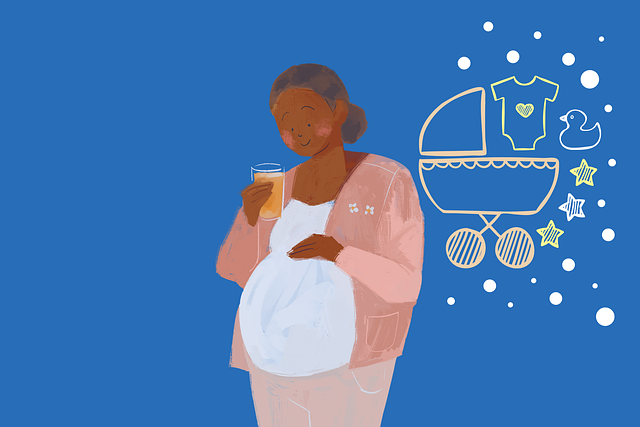It was a sweltering 97 degrees when I went into labor, standing on a subway platform waiting for the uptown train to the hospital. I had tried everything to induce labor—consuming an entire pineapple and walking nearly two miles, with breaks only to grab an unsweetened iced tea and use the restroom. By 39 weeks, amid the summer’s fifth heat wave, I was ready for the pregnancy phase to end and for the reality of parenting to commence.
The hospital offered a cool respite, a welcome surprise for any woman who has endured a summer pregnancy. After 34 long hours of labor, my gratitude for the cool environment was immense, but my mind quickly shifted to concern for my newborn daughter, as our apartment felt too warm for a baby.
Our two-bedroom home had only two air conditioning units—one in the living room and one in the bedroom—yet the sun’s relentless heat made it unbearable, especially in my daughter’s room. Unless you were directly in front of an air conditioner, the heat was suffocating. I often found myself wandering the apartment in just my nursing bra and underwear, feeling sticky and uncomfortable. Reflecting on that time, I can’t recall if my tears were due to the heat or the overwhelming solitude of being alone with my baby, but they flowed freely—three, four, or even five times a day.
Postpartum depression (PPD), also known as postnatal depression, is a specific type of depression that can affect women after childbirth. Symptoms may include sadness, fatigue, changes in sleep and eating habits, a diminished sex drive, and feelings of anger, anxiety, and irritability. While some signs, like low energy and sleeplessness, can be attributed to the demands of new parenthood, others were impossible to overlook. My anxiety peaked on weekdays, particularly as my partner prepared to leave for work, triggering heavy sobs even before the door closed behind him. I cried over spilled water, cold coffee, and unwashed dishes, and even the smallest frustrations would send me into tears.
To cope, I began walking daily, regardless of the weather. My daughter was shielded from the sun by her stroller canopy, but I felt every ray on my skin. They say exposure to sunlight can alleviate symptoms of depression, yet I found no solace. I barely remember those days, save for an odd sunburn on my neck and shoulders and my frequent trips to Foodtown, our local grocery store. Though it was cleaner than most Brooklyn bodegas, it still fell short of my expectations. I often convinced myself that I visited for the cool air, but deep down, I was yearning for connection, hoping someone would notice my struggle and offer guidance.
With a history of depression, I was aware of what I was experiencing, yet I pressed on, thinking that if I pushed hard enough, I could overcome this hurdle. I should be enjoying these moments. I should be happy. “Just snap out of it,” I told myself. But I knew better.
I watched my daughter’s first year through a foggy lens, like forcing my eyes open in a chlorinated pool. I held back tears while she ate her first solid foods, and I sobbed when she reached milestones like smiling and crawling. In those moments, I felt unworthy of the title “mama.” Mamas were supposed to love their children unconditionally, to embrace motherhood. I felt like a failure, convinced that I wasn’t the mother she deserved.
One particularly challenging day stands out in my memory. My daughter was teething and inconsolable, and despite my efforts to comfort her, nothing worked. When I offered her my breast, she latched on briefly before returning to her fitful cries. Staring blankly at the freshly painted closet door, I rocked her gently, tears streaming down my face. In that moment of despair, I envisioned holding her tightly, gripping her until her cries faded and her body relaxed. Panic surged through me, and I placed her gently in her crib before collapsing on the floor, sobbing uncontrollably. My tears echoed in the empty hallway as I struggled with overwhelming feelings of hopelessness, realizing I couldn’t continue like this.
Fortunately, I sought help and persevered through my darkest moments. Now, two years later, I can feel the familiar stirrings of anxiety as the weather warms up again—sweating reminds me of crying, and crying reminds me of the depths of despair I faced. I still struggle to appreciate the heat, often feeling uncomfortable when sitting on plastic chairs or peeling myself from surfaces. Instead of fighting these feelings, I maintain my thermostat at a comfortable 76 degrees, don shorts, apply sunscreen, and venture out to the park with my daughter, where we enjoy chasing ducks and gathering flowers in the sun.
For those interested in exploring the topics of postpartum depression and motherhood further, resources such as Wikipedia on artificial insemination provide valuable information. Additionally, for families considering home insemination options, Cryobaby’s at-home insemination kit and the 21-piece at-home insemination kit are excellent choices for guidance.
Summary
This article reflects on a mother’s experience with postpartum depression. It discusses the physical and emotional challenges she faced after giving birth, highlighting the symptoms of PPD and the importance of seeking help. The narrative illustrates the complexities of motherhood and the struggles many new parents encounter, ultimately emphasizing resilience and the ability to find joy amidst adversity.
Keyphrase: postpartum depression journey
Tags: “home insemination kit”, “home insemination syringe”, “self insemination”
